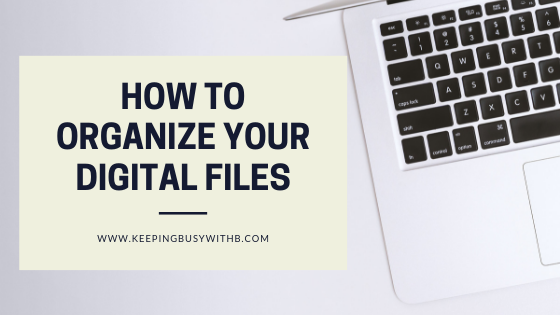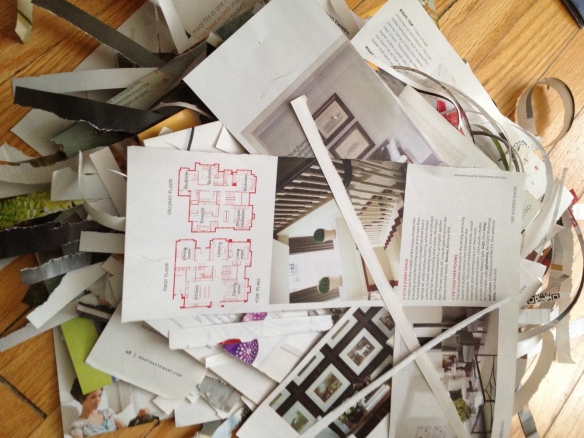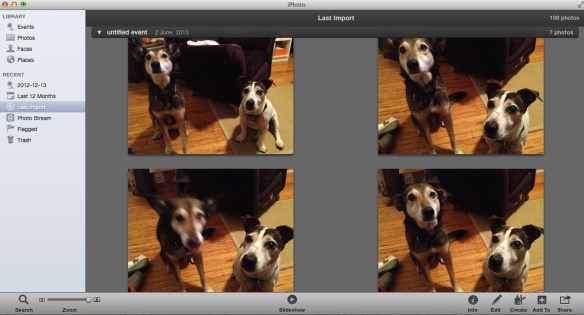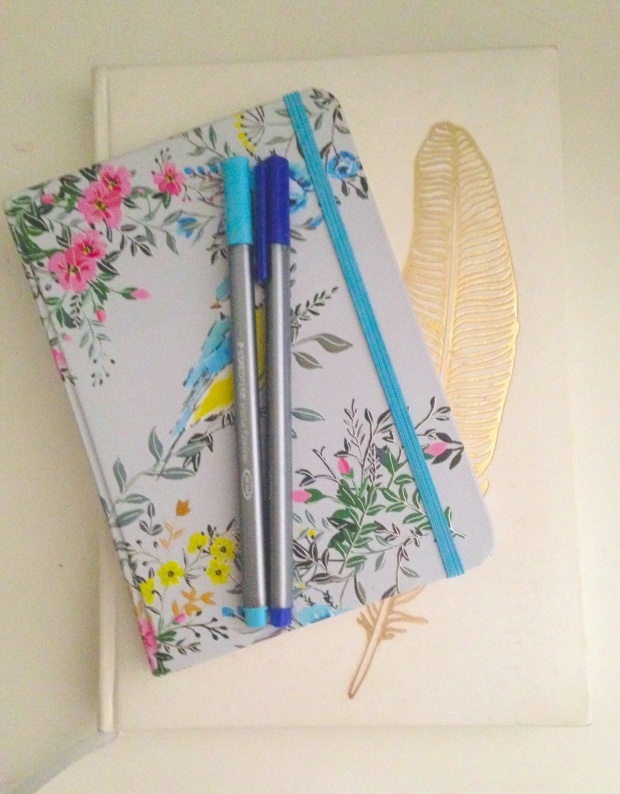
- I wasn’t processing documents on a regular basis. I’d scan written meeting notes to transcribe into Word docs and never do it. I’d dump files in the folder marked “Inbox” on my desktop and never go through it. Now I make going through my computer inbox part of my weekly review so I can tackle my processing in bite-sized chunks instead of trying to clean all of my files up at once.
- Not naming files as soon as I created them meant I relied a lot on my memory to store important information, like when and where my photos were taken for example. I’m taking care to label each of my files correctly and accurately so I can find what I need quickly.
- Not being able to let go meant that I was holding onto a lot of things that were a waste of space- literally. Bad photos, old school projects, drafts of things that are so bad they’ll never see the light of day- these are all things that need to go.
- I never took advantage of external hard drives or cloud-based storage systems, meaning I kept a lot of archival material in with projects I was currently working on, which made me feel like I was wading through files every time I went to look for something.
- I didn’t take advantage of the “Folders” function on my computer. Instead of keeping al of your files in your downloads folder, or dumping all your stuff onto your desktop (which can make your computer run slower), file away documents and photos that are clearly labelled and follow a system that works best for you. Depending on your OS you can further organize your folders by colour-coding or designating tags. Or go the old-fashioned route and use letters, numbers and symbols to organize and prioritize your folders so they fit in with your workflow.

I’ve found from experience that staying organized is one of the keys to maintain a balanced, more productive lifestyle. I’m trying to figure out the best way to organize my life here, or click here for some of the best methods for managing your time. For more ways to keep it all together, click here.
How do you organize your life? Inquiring minds want to know. Tell us below or send pics of your beautifully organized stuff to keepingbusyb@gmail.com.

 You don’t have to be a detective to figure out exactly what I’ve been up to when I first come in the door to my apartment. My shoes will be kicked off somewhere near the door; my keys will be on the nearest flat surface I can find. My purse gets stashed just about anywhere (which, believe me, can cause a great deal of panic if I don’t remember exactly where that is). No matter how clean I leave things, when I come back in everything inevitably looks like it’s been in a tornado. (You should see what it looks like when I try to get out the door in the morning- it’s like a tornado in reverse.)
You don’t have to be a detective to figure out exactly what I’ve been up to when I first come in the door to my apartment. My shoes will be kicked off somewhere near the door; my keys will be on the nearest flat surface I can find. My purse gets stashed just about anywhere (which, believe me, can cause a great deal of panic if I don’t remember exactly where that is). No matter how clean I leave things, when I come back in everything inevitably looks like it’s been in a tornado. (You should see what it looks like when I try to get out the door in the morning- it’s like a tornado in reverse.) What changes have you made to your mudroom or entryway to make it more functional for you? I wanna know all of your secrets (with pictures please!). You can send them to keepingbusyb@gmail.com or comment below with the link to your blog so you can show off your mad organizing skills with everyone else.
What changes have you made to your mudroom or entryway to make it more functional for you? I wanna know all of your secrets (with pictures please!). You can send them to keepingbusyb@gmail.com or comment below with the link to your blog so you can show off your mad organizing skills with everyone else.


